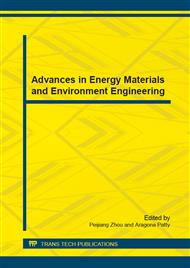p.597
p.602
p.607
p.612
p.619
p.626
p.631
p.637
p.643
CFD Simulation of Air Flow through the Annular Distributor of a Swirling Fluidized Bed
Abstract:
Fluidized beds are widely used in a variety of industrial processes. The air distributor being an integral part of the fluidized bed, the air flow characteristic through it is of great importance as far as the design and working of it is concerned. Inappropriate design will lead to an incomplete fluidization and improper mixing of the air and bed particles. The current study was carried out to investigate the flow characteristics and predict non-uniformity in flow through the annular distributor of a Swirling Fluidized Bed and its variation with various aspects of the distributor like blade overlap angle and blade inclination. In this study, the commercial CFD package FLUENT 6.3 was used for analysis. The velocity and pressure profiles for various blade designs were investigated at the distributor outlet based on several operating variables including air inlet velocities, blade overlap angles (9o, 12o, 15o, and 18o), blade inclinations (10o and 15o), along with variations in the opening between the distributor blades. The most significant finding of this work is that the fluid tends to flow through a path with least resistance. The flow path with the largest cross section area and shortest path length has been identified and explains the velocity profile at blade exit.
Info:
Periodical:
Pages:
619-625
Citation:
Online since:
December 2014
Price:
Сopyright:
© 2015 Trans Tech Publications Ltd. All Rights Reserved
Share:
Citation:


